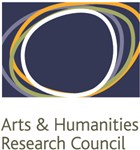Short term morphosyntactic change
Suprun (1969) - STMC bibliography
Reference
Suprun A. E. 1969. Slavjanskie čislitel´nye (stanovlenie čislitel´nyx kak osoboj časti reči). Minsk: Belorussian State University.
Summary
This book discusses the development of numerals as a morphological class in the Slavonic languages. It consists of the following four chapters:
Chapter 1 considers prerequisites for numerals to become a separate part of speech in the Slavonic languages.
Chapter 2 is concerned with the diachronic analysis of the derivational systems of numerals in the South, West and East Slavonic languages in turn.
Chapter 3 surveys changes in the inflectional systems of the Slavonic numerals and in their syntactic properties.
Chapter 4 analyzes predicate agreement when the subject is a quantified expression in Slavonic languages (see examples from Russian in (1)). It provides statistics for singular and plural predicates with quantified expressions in 20th century Russian, Byelorussian and Ukrainian, as well as an analysis of historical change in Russian based on the study of 18th, 19th and 20th century texts.
| (1a) | Vošl-o | pjat´ | čelovek |
| came.in-SG.N | five[NOM] | person [PL.GEN] | |
| ‘Five people came in.’ | |||
| (1b) | Vošl-i | pjat´ | čelovek |
| came.in-PL | five[NOM] | person [PL.GEN] | |
| ‘Five people came in.’ | |||
An in-depth analysis of predicate agreement with quantified expressions in the Slavonic languages based on statistical data is provided in Chapter 4. The author observes various agreement patterns starting from Common Slavonic and Old Church Slavonic. This provides a background against which the significant variation in agreement across different contemporary Slavonic languages is presented. Thus in Bulgarian and Macedonian the plural prevails with all types of quantified expressions, whereas in other South Slavonic and in West Slavonic languages the form of the predicate is to a very large extent determined by the quantifier: lower numerals, ‘two’, ‘three’ and ‘four’, favour plural predicates (or the dual with the numeral ’two’ in Slovene and Sorbian), while higher numerals typically require the singular form of the predicate. The East Slavonic languages stand out in that they allow a much higher degree of variation. The type of the quantifier (‘two’, ‘three’ and ‘four’, vs. other numerals and non-numeric quantifiers) still plays a role, however agreement rules are less rigid and are subject to statistical probabilities.
Suprun claims that the choice between singular and plural is conditioned by a combination of factors. The type of the quantifier is one of them, however this factor interacts with word order (subject-predicate or predicate-subject), the specific verb (e.g., the copula byt´ ‘be’ very frequently take singular with quantified expressions), the gender of the noun (plural predicates are slightly more frequent with feminine nouns), and the type of the clause (for example, expressions of time favour singular predicates).
The author argues that variation in predicate agreement is found in all Slavonic languages (though the degree of this variation differs from language to language). This indicates that the agreement patterns in question are in the process of change, as are the syntactic properties of numerals. Three sets of statistical data based on the study of 18th, 19th and 20th century Russian texts are provided in support of this argument.
Suprun returns to the issue of predicate agreement with quantified expressions in his concluding remarks, where he provides an interpretation of the use of singular predicates with quantified expressions. He argues that the singular in such cases (typically neuter for predicates which inflect for gender) is a default form, unmarked for number and gender. This indicates that numerals fall outside the feature systems of number and gender in the Slavonic languages.
Texts investigated
Not specified.
Statistics
Statistics for singular/plural predicates in Russian are given separately for the 18th, 19th and 20th centuries with respect to the type of quantifier in the quantified expression in subject position:
- the item oba ‘both’(masculine and neuter) obe ‘both’ (feminine).
- ‘2’, ‘3’, ‘4’
- ‘5’ – ‘10’
- collectives dvoe ‘two’, troe (three), etc.
- complex numbers
- compound numbers
- quantifiers including word tysjača ‘thousand’, million ‘million’
- non-numeric quantifier neskol´ko ‘a few’
- non-numeric quantifiers skol´ko ‘how much’, stol´ko ‘so much’, mnogo ‘many’
Raw figures and percentages are provided.
Which data from the source were used
Statistics for singular/plural predicates in 19th and 20th century Russian are presented in full in the database.
Project members
Prof Greville G. Corbett
Dr Matthew Baerman
Dr Dunstan Brown
Dr Alexander Krasovitsky
Dr Alison Long
Period of award:
September 2004 - May 2008
Funder
Arts and Humanities Research Council (AHRC) - RG/AN4375/APN18306
TOP

